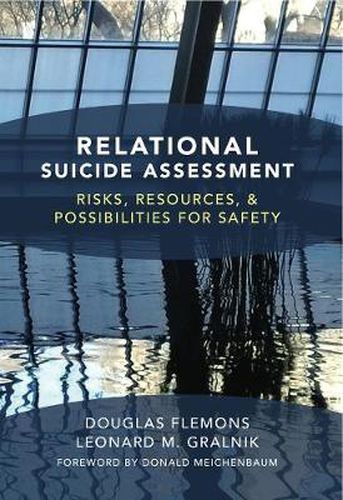Readings Newsletter
Become a Readings Member to make your shopping experience even easier.
Sign in or sign up for free!
You’re not far away from qualifying for FREE standard shipping within Australia
You’ve qualified for FREE standard shipping within Australia
The cart is loading…






Given the isolating nature of suicidal ideation and actions, it’s all too easy for clinicians conducting a suicide assessment to find themselves developing tunnel vision, becoming overly focused on the client’s individual risk factors. Although critically important to explore, these risks and the danger they pose can’t be fully appreciated without considering them in relation to the person’s resources for safely negotiating a pathway through his or her desperation. And, in turn, these intrapersonal risks and resources must be understood in context-in relation to the interpersonal risks and resources contributed by the client’s significant others.
In this book, Drs. Douglas Flemons and Leonard M. Gralnik, a family therapist and a psychiatrist, team up to provide a comprehensive relational approach to suicide assessment. The authors offer a Risk and Resource Interview Guide as a means of organizing assessment conversations with suicidal clients. Drawing on an extensive research literature, as well as their combined 50+ years of clinical experience, the authors distill relevant topics of inquiry arrayed within four domains of suicidal experience: disruptions and demands, suffering, troubling behaviors, and desperation.
Knowing what questions to ask a suicidal client is essential, but it is just as important to know how to ask questions and how to join through empathic statements. Beyond this, clinicians need to know how to make safety decisions, how to construct safety plans, and what to include in case note documentation. In the final chapter, an annotated transcript serves to tie together the ideas and methods offered throughout the book.
Relational Suicide Assessment provides the theoretical grounding, empirical data, and practical tools necessary for clinicians to feel prepared and confident when engaging in this most anxiety-provoking of clinical responsibilities.
$9.00 standard shipping within Australia
FREE standard shipping within Australia for orders over $100.00
Express & International shipping calculated at checkout
Given the isolating nature of suicidal ideation and actions, it’s all too easy for clinicians conducting a suicide assessment to find themselves developing tunnel vision, becoming overly focused on the client’s individual risk factors. Although critically important to explore, these risks and the danger they pose can’t be fully appreciated without considering them in relation to the person’s resources for safely negotiating a pathway through his or her desperation. And, in turn, these intrapersonal risks and resources must be understood in context-in relation to the interpersonal risks and resources contributed by the client’s significant others.
In this book, Drs. Douglas Flemons and Leonard M. Gralnik, a family therapist and a psychiatrist, team up to provide a comprehensive relational approach to suicide assessment. The authors offer a Risk and Resource Interview Guide as a means of organizing assessment conversations with suicidal clients. Drawing on an extensive research literature, as well as their combined 50+ years of clinical experience, the authors distill relevant topics of inquiry arrayed within four domains of suicidal experience: disruptions and demands, suffering, troubling behaviors, and desperation.
Knowing what questions to ask a suicidal client is essential, but it is just as important to know how to ask questions and how to join through empathic statements. Beyond this, clinicians need to know how to make safety decisions, how to construct safety plans, and what to include in case note documentation. In the final chapter, an annotated transcript serves to tie together the ideas and methods offered throughout the book.
Relational Suicide Assessment provides the theoretical grounding, empirical data, and practical tools necessary for clinicians to feel prepared and confident when engaging in this most anxiety-provoking of clinical responsibilities.